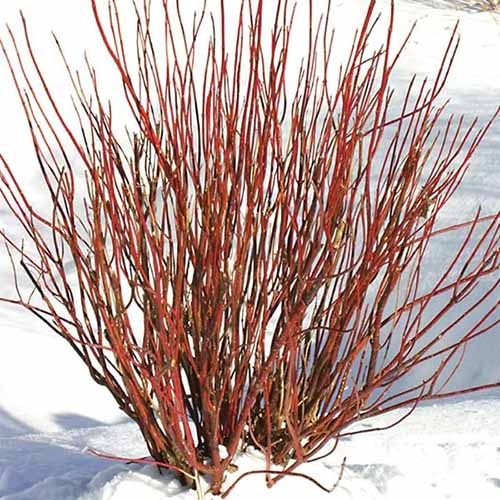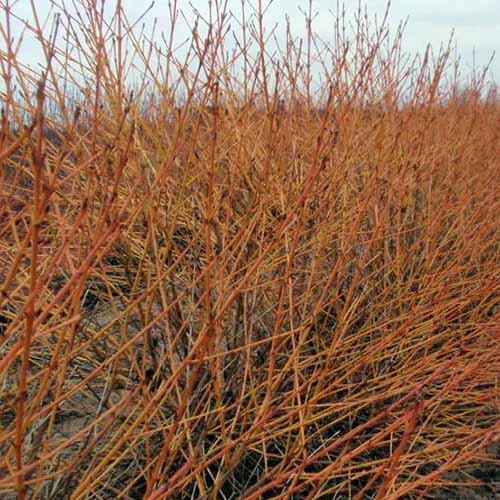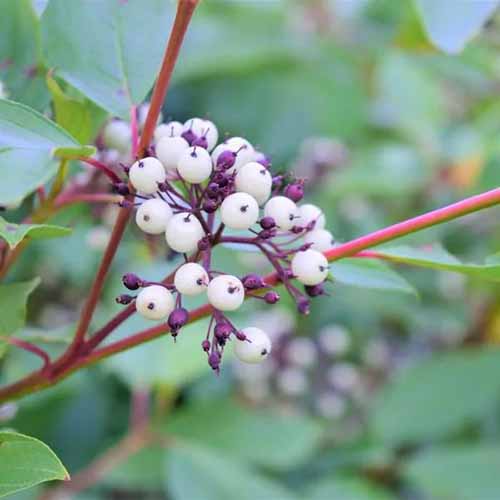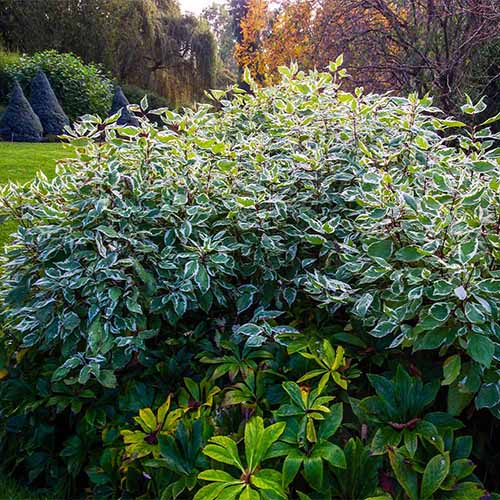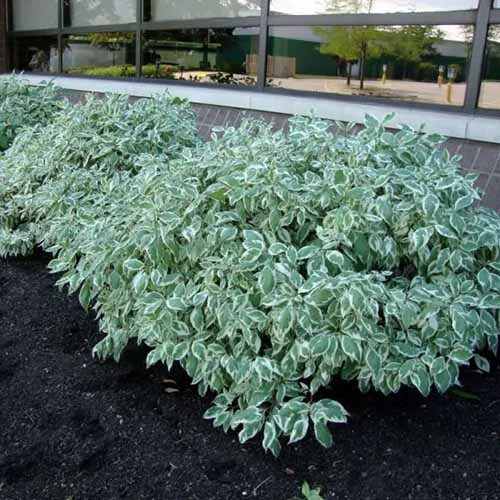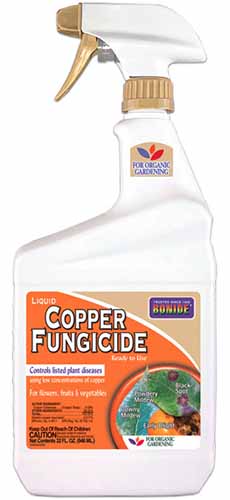Cornus alba, C. sanguinea, C. sericea
Would you like to know my secret for creating the perfect winter arrangements, home decor, and wreaths? That’s right, branches from my red twig dogwoods.
As a Scandinavian-American, born in the middle of winter and raised in the Northern Hemisphere, it’s no surprise that I greet the cold season with a squeal of excitement. Yes, I’m one of those people. Don’t hate me because I’m wintry.
This also means I live for winter decorating, whether it’s inside my home or outside on the porch and in my gardens. I’m always looking for ways to adorn my spaces in ways that highlight the beauty of the chilly season while creating a welcoming and cozy atmosphere for all to enjoy.
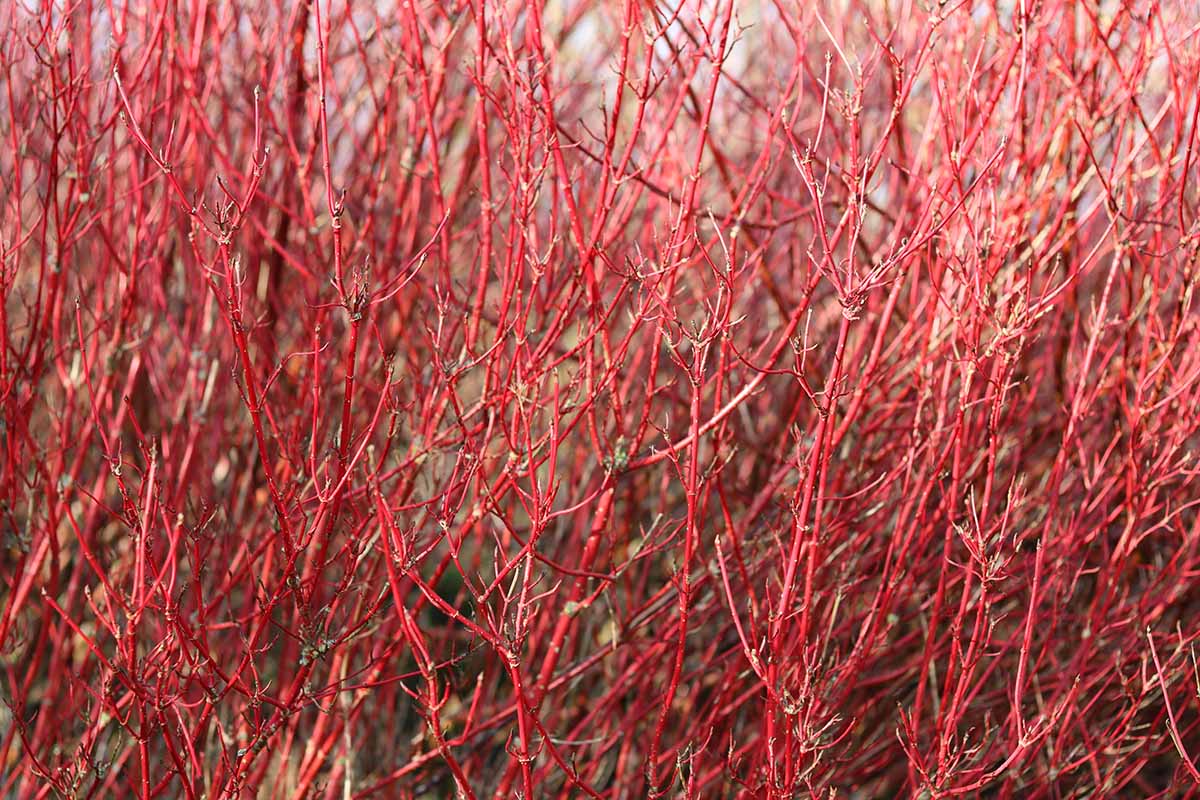
We link to vendors to help you find relevant products. If you buy from one of our links, we may earn a commission.
Back in my 20s I got serious about the art of winter decor. I wanted to take the valuable wreath-making skills my mother taught me to a higher level.
So I began to study the individual pieces of what constitutes attractive, eye-catching displays. And I made an important discovery: red twig dogwood.
Red twig dogwoods are deciduous shrubs in the Cornus genus. Depending on where you live in the world, you can find red twig varieties and cultivars of various species in the genus.
In this article, I’ll be covering the species most commonly grown in home gardens: C. alba, C. sanguinea, and C. sericea.
The moment I identified this group of plants as an integral player in the winter decor and gardening game, I felt like I’d won the lottery.
At first, back then, I would go to great lengths to scavenge and forage in forests for the vibrant red twigs – hiking across fields, mucking through swamps. It was a lot of work. So when I finally had my own land to cultivate my dearest plant buddies, these dogwoods definitely made the list of must-haves.
Today, in my garden, I have three different types of red twig dogwoods growing, and I’m going to share all about how to grow and care for these vibrant shrubs.
Here’s a quick overview of what I’ll cover in this article:
If you’re ready to take your winter gardening to the next level with red twig dogwood, let’s jump right in!
What Is Red Twig Dogwood?
Cornus is a genus in the Coraceae family of flowering trees and shrubs known for their attractive trees and flowers and their distinctive, vibrantly colored bark, commonly known as dogwoods.
There are roughly 50 different species within the genus and the colors of their bark range from acid green, to orange, yellow, and red. Most of the types commonly referred to as “red twig dogwoods” are from the species C. alba, C. sanguinea, and C. sericea.
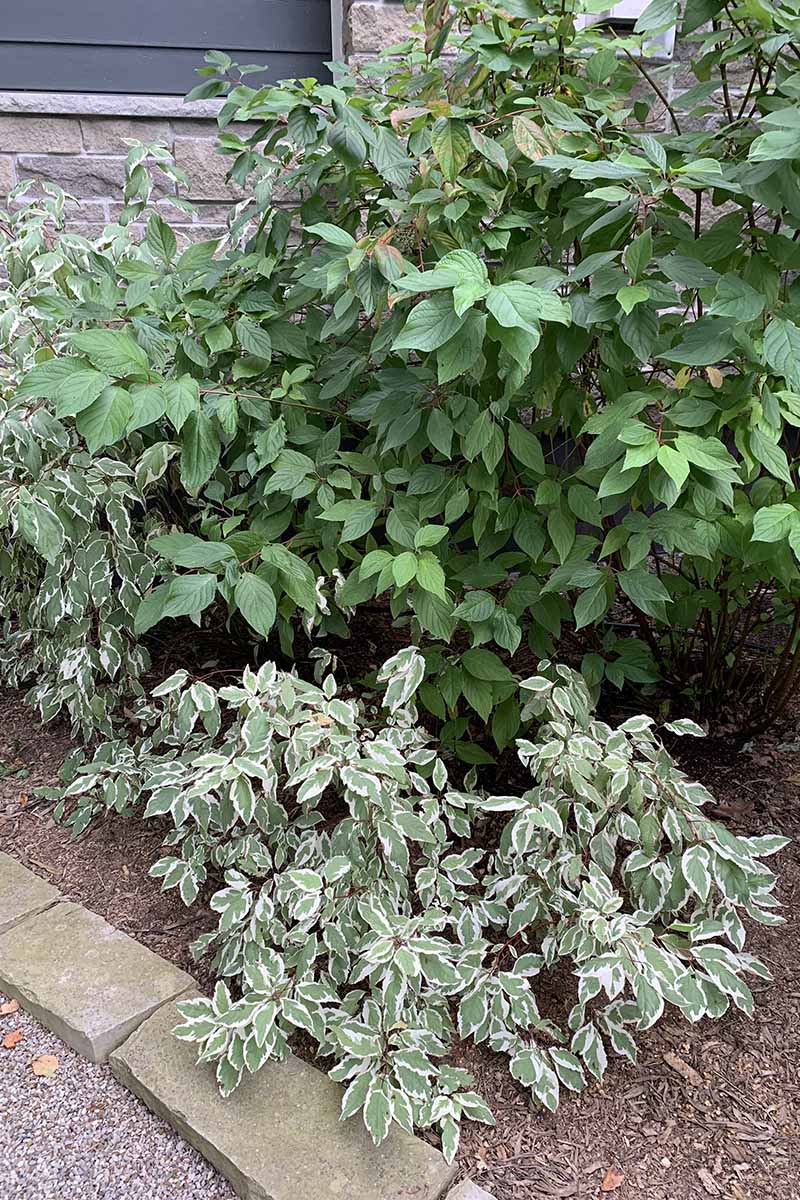
The bright or deep red color of their bark is most pronounced in younger stems and most often observed or noticeable during the winter after the shrubs have dropped their leaves.
Aside from the name red twig dogwood, each of the three species goes by several other common names.
C. alba is also known as tartarian or tatarian dogwood, red-barked, Siberian, and white-berried dogwood. It’s native to Siberia, northern China, and the Korean peninsula.
C. alba was previously classified as C. pumila and Swida alba so you may sometimes see it labeled with these synonyms.
C. sanguinea, also known as common dogwood, sometimes goes by blood twig, European, and swamp dogwood. This species is native to Europe and western Asia.
C. sericea is commonly known as red osier or American dogwood, as it’s native to North America. Additionally, it is sometimes mistaken for C. alba.
There are a large number of varieties and cultivars within these three species, and not all of them feature the red branches that give them the moniker “red twig dogwood.” In this article, we’ll focus on the red twig types.
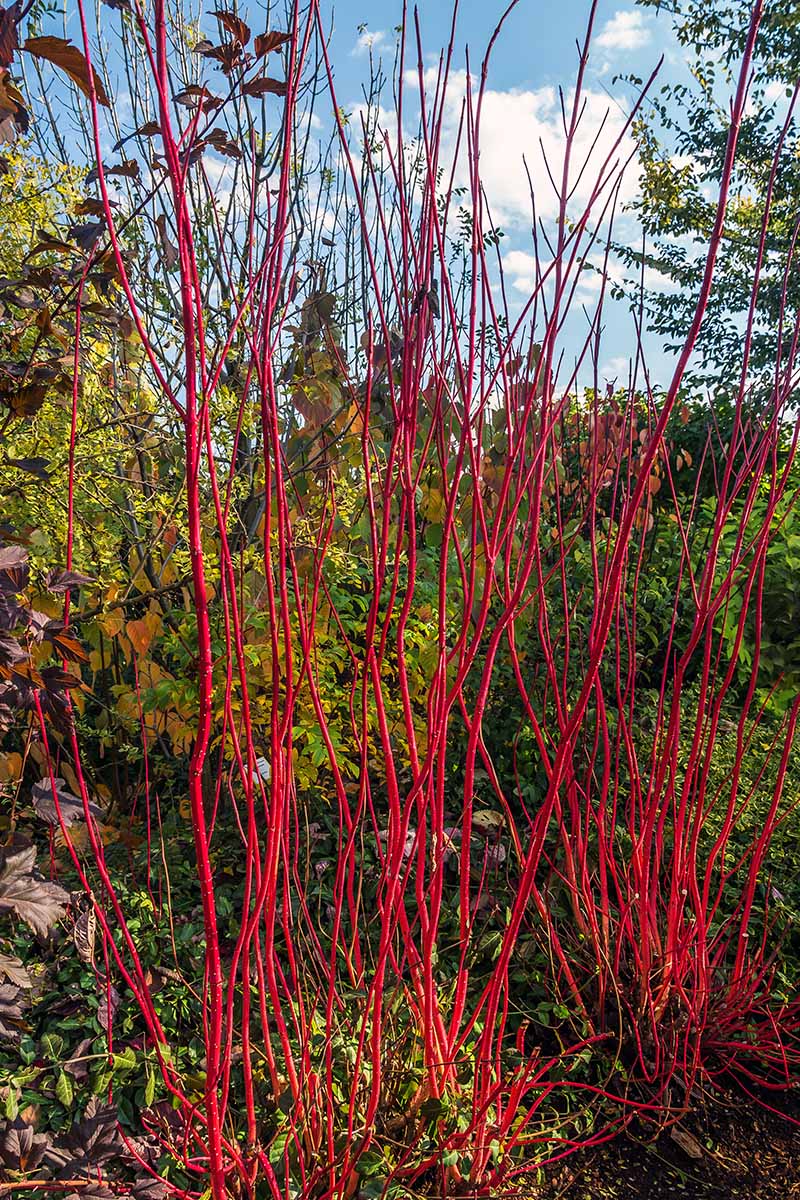
In general, these shrubs can range anywhere between four to 15 feet tall and from three to 15 feet wide at maturity. They reach full maturity within about five to 10 years.
Red twig dogwoods begin their annual growth cycle in spring with buds that open into clusters of small, white flowers, attracting bees and butterflies. As summer approaches, these flowers give way to white or bluish-greenish berries, which are popular with birds.
Leaves emerge to a lush solid green, or subtle shades of gold. Some cultivars have variegated foliage with attractive white, cream, or yellow with green combinations.
Come fall, the leaves transform into shades of deep gold, orange, purple, and red offering a brilliant autumn display. In winter, the foliage falls away to reveal the signature brightly colored stems, creating striking visual interest against a snowy or lackluster backdrop.
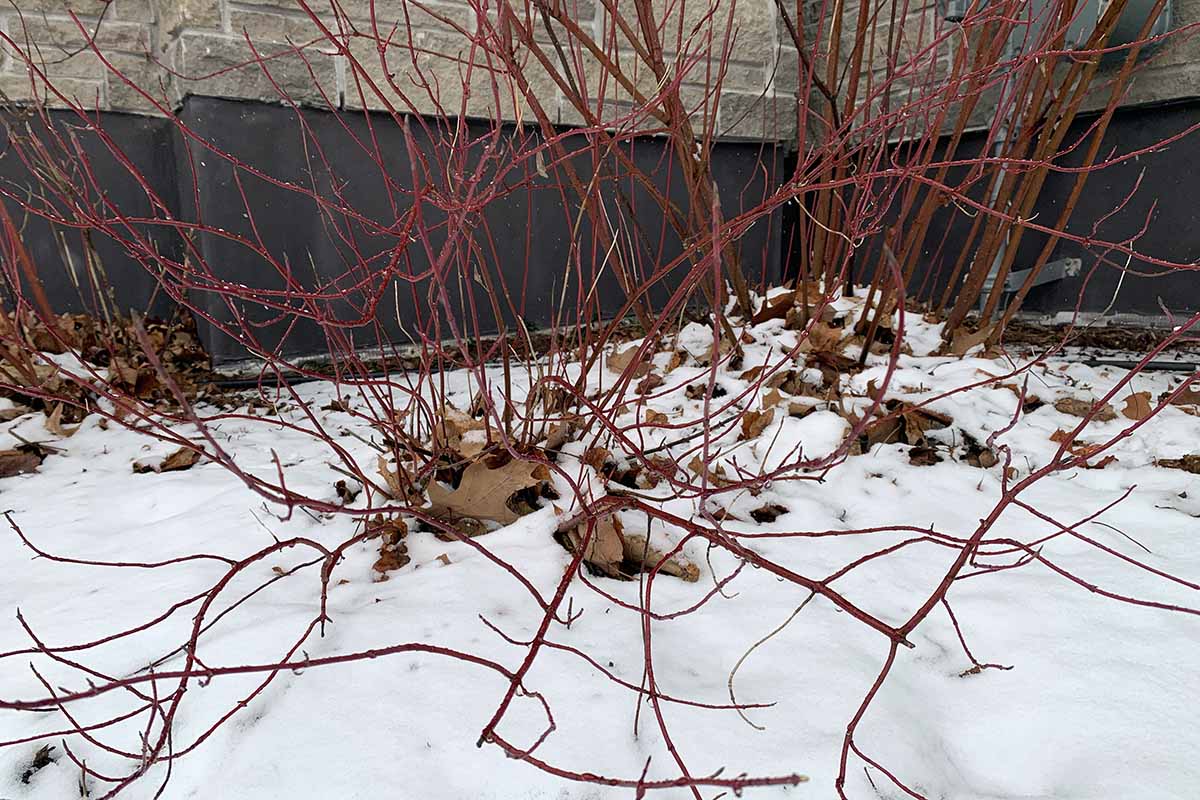
This seasonal progression showcases the varied ornamental qualities of the red twig dogwoods throughout the year. These shrubs are low maintenance and grow successfully in USDA Hardiness Zones 2 to 8, depending on the species.
We’ll cover more on care and maintenance later, but it’s worth mentioning here that to produce those coveted red twigs, regular pruning is necessary to refresh the growth because the youngest branches are also the most brightly colored.
Before we move to care, though, let’s explore the history and origin of these beauties.
Cultivation and History
The beauty of red twig dogwood only showcases one side of its personality. Culturally, it boasts a history of functional uses.
Native Americans used the bark of C. sericea in dyes and basket weaving, and they also added it to their smoking tobacco. The strong branches made terrific handles for tools.
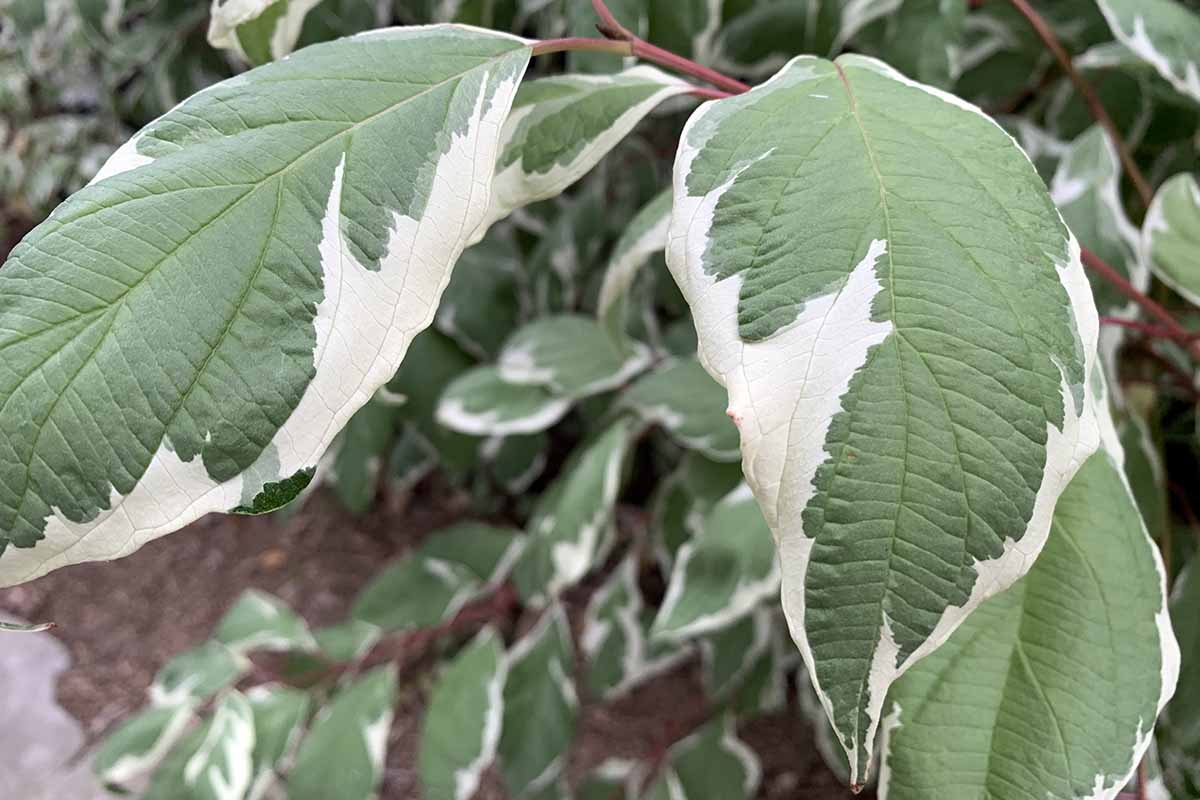
These shrubs serve well in riparian zones, shelterbelts, woodlots, and many other areas targeted for ecological reclamation and naturalization. They stabilize the soil, attract pollinators, and feed wildlife, making them an ideal plant for agroforestry designs.
While birds and small mammals might enjoy the berries of red twig dogwoods, you, as a human, might not. Although they are technically edible, they are bitter-tasting and can cause gastrointestinal distress.
First Nations peoples consumed them but would often combine the berries with other sweet fruits like Saskatoon berries.
Now that we’ve got a good idea of what red twig dogwood shrubs are, and why they’re popular, let’s take a closer look, beginning with how to propagate these plants.
Red Twig Dogwood Propagation
Red twig dogwoods can be propagated via a few different methods including from seed, by taking cuttings, by division, and of course by transplanting a container-grown plant purchased from a reputable grower.
From Seed
While it is possible to collect seeds and grow red twig dogwood plants from these seeds, the process is tricky, time-consuming, and unpredictable.
Many of the shrubs you buy from greenhouses and nurseries are cultivated varieties and seeds will not grow true to the parent plant.
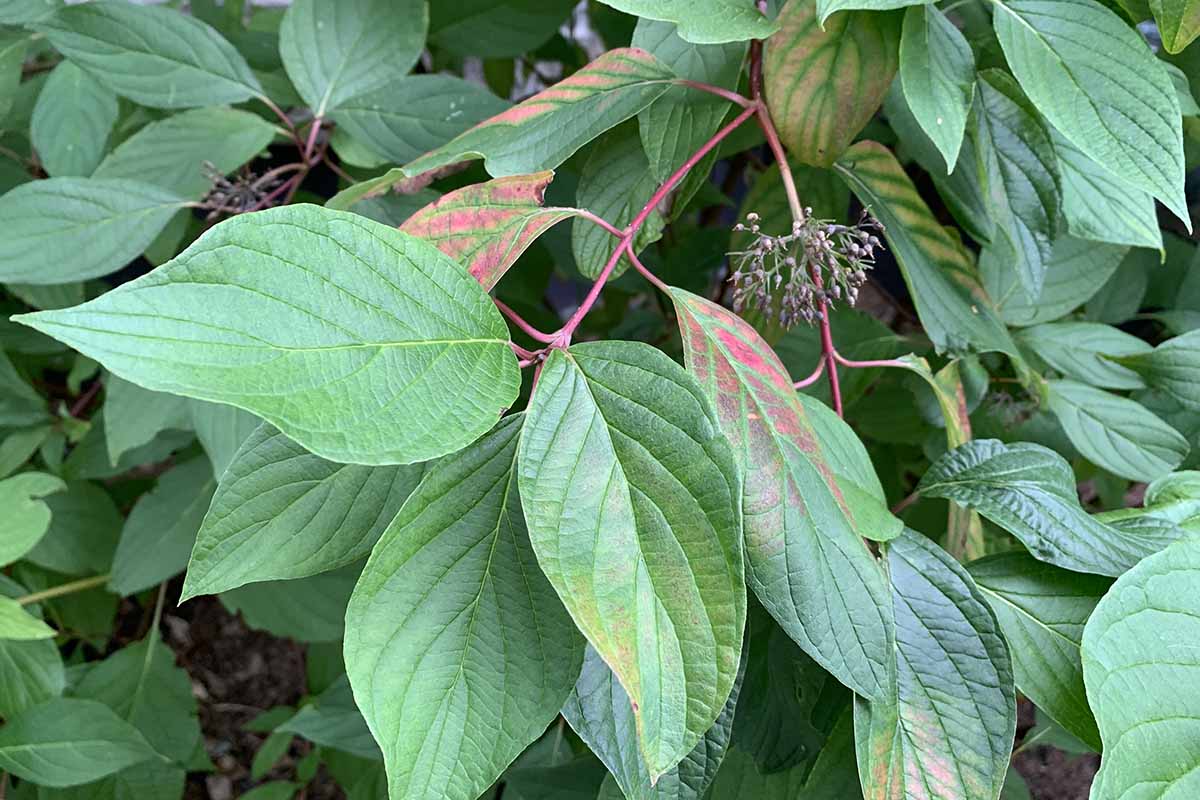
Additionally, red twig shrubs growing in the wild have likely cross-pollinated with neighboring dogwoods.
If you’re keen to collect seeds and attempt growing a red twig dogwood via this method, you’ll need to pick the ripe berries in fall and mash them up to extract the seed.
The seeds require cold-stratification, which can either be achieved by direct sowing fresh seed outdoors in fall, or keeping them in the refrigerator for two to three months before sowing in spring.
After stratification, you can sow the seeds in a shallow tray of potting soil or directly in the ground in spring. Maintain even moisture in the soil.
When seedlings have reached about two inches tall, pot them up into individual three- to six-inch containers.
Once seedlings have reached six to eight inches tall, they can be planted out into the garden, ideally in spring or fall.
Learn more about how to start dogwoods from seed in our guide.
From Cuttings
A more reliable method of propagation is to take stem cuttings.
You can take softwood cuttings in spring or summer, or hardwood cuttings in fall, after the leaves have fallen from the plant.
Softwood
Clip four- to six-inch lengths of young stems, defoliate the bottom half, and dip the cut end in rooting hormone. Then stick the dipped end into a shallow tray of potting soil. It’s best to start plenty, in case some of them fail.
Keep the soil consistently moist and cover the tray with plastic that allows for some ventilation, propped up so it doesn’t make contact with the cuttings. This will keep the immediate air around the new plants moist and warm.
Place them in a sunny location, with bright, indirect light.
When you notice new growth, pot up the cuttings into individual three- to six-inch containers. Maintain a consistent level of moisture without drowning the roots. Too much moisture can cause rot.
Once the cuttings are about six to eight inches tall, you can plant them out into the garden, preferably in spring or fall to avoid summer heat.
Hardwood
Hardwood cuttings are an even more reliable method of propagating red twig dogwoods. This method is slow but is usually very successful.
First, select a healthy looking young shoot that is less than a year old. Remove the tip, then cut the twig into six- to nine-inch lengths. Make a clean, angled cut above a bud at the top of each section.
At the base of each cutting make a straight cut. This is the end that will be rooted. Dip this end in rooting hormone and tuck it into a prepared trench outdoors.
Your trench should be made in well-draining, fertile soil in a location that is sheltered from the wind.
Stick the cuttings into the trench so that about one third sits above the soil, with at least two buds exposed. Firm the soil around the cuttings and maintain consistent moisture.
New aboveground growth is indicative of successful root formation, which may take several months, and at this point, the clones can be transplanted elsewhere if desired.
From Suckers
Many red twig dogwoods produce suckers, and it’s possible to divide these suckers to produce new plants.
Begin by digging carefully close to the area of the sucker you wish to remove from the parent plant.
Expose the section of roots you wish to divide. Cut the section free from the parent plant making sure to include the stems and roots of the sucker. Fill in the hole where you removed the division and firm the soil at the base of the parent plant.
Next, take your sucker, trim the aboveground growth by approximately half its original height. This will encourage new, vigorous growth after transplant.
If your division is small, and you take it in the spring, you can foster it in a container during the summer before planting out in the fall if you like.
Because these are vigorous growers, it’s fine to plant divisions directly in the ground as long as you tend to their needs as required.
Transplanting
The easiest way to get started with a red twig dogwood is to purchase a shrub from a greenhouse or nursery and transplant it into the garden in early spring or fall. I’ll walk you through the process.
First, be sure to choose an appropriate planting site. I’ll cover everything your red twig dogwood needs to live its best life in the next section, so feel free to circle back here later if you need to.

Start by digging a hole that is twice as wide and the same depth as the root ball of your shrub. Depending on the stage of growth your plant is at, this could be anywhere from six inches to two feet wide.
Next, remove your plant from its container and examine the roots. Clip away any twisted or damaged roots and loosen those that have become potbound.
If roots are severely potbound, make a few cuts into the root ball with your hori hori or a sharp knife to create some space in the root ball.
As long as your soil is in good condition, you shouldn’t need to add amendments as these plants are pretty resilient.
If you’re like me and you want to give your new plants the best chance at survival, scoop in a shovelful of well-rotted compost and mix it into the soil you removed from the planting hole.
Set the plant in place, aiming for the top of the root ball to be level with the surrounding ground.
Backfill with soil, gently tamping around the roots as you work. When you’re finished, give your new transplant a nice drink of water. This should be at least two or three gallons.
If the soil settles quite a bit while watering, add more soil to the surface. Apply a two- to three-inch layer of mulch over the root zone to aid in moisture retention and to insulate the vulnerable roots from extreme heat or cold.
Now that you are familiar with all the ways to propagate red twig dogwood shrubs, let’s take a closer look at all the elements these plants need to live their best lives.
How to Grow Red Twig Dogwood
Red twig dogwoods are suitable for cultivation in USDA Hardiness Zones 2 to 8, depending on the type. They grow best in full sun to part shade.
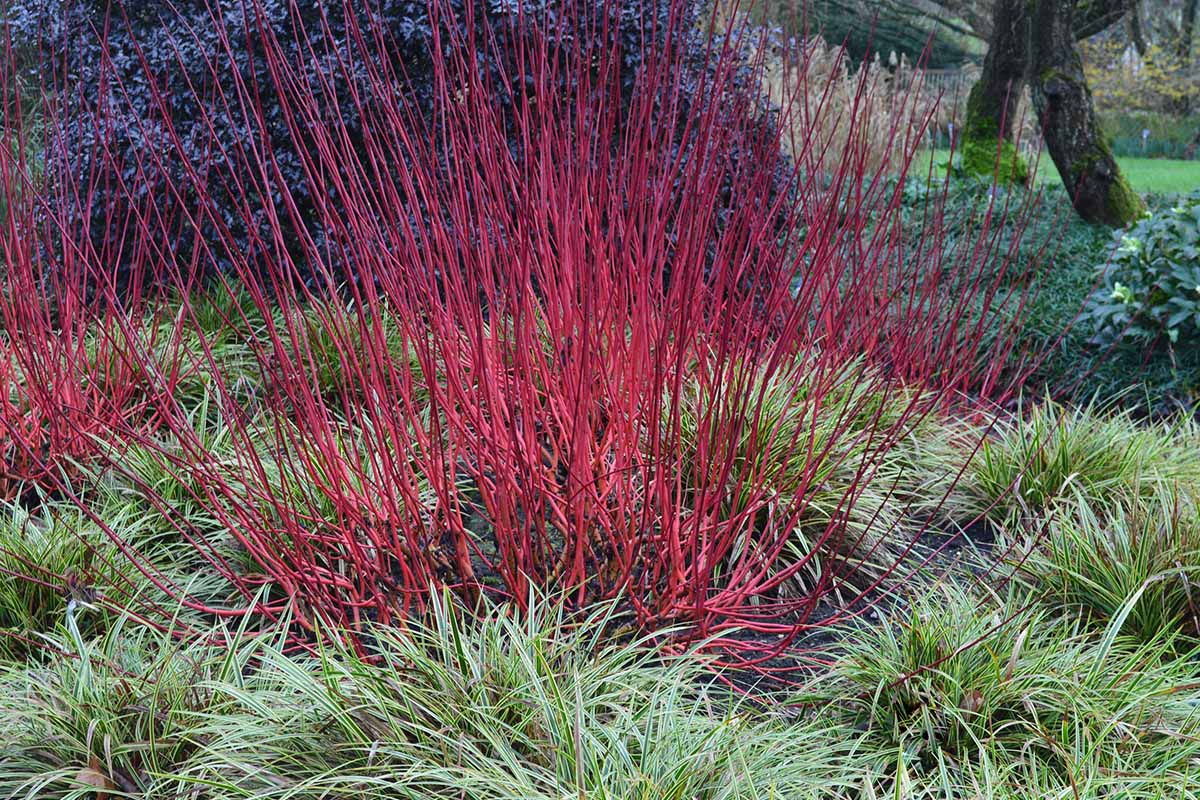
They prefer loamy soil with a pH of 5.5 to 8.5, but some will do fine in other soil types, as long as it’s moist, yet well-draining. Some varieties will even tolerate wet soils, which is the reason you’ll often see swaths of red twigs growing in ditches and swampy or boggy areas.
Most red twig dogwoods are fast growers and some sucker freely, so check the expected mature height and width of your plant on the tag that accompanies it so you can plan your spacing accordingly.
These shrubs typically reach their maximum size somewhere between five and 10 years old.
Although red twig dogwoods might be able to tolerate a dry spell and bounce back after the next rainfall, to keep them as healthy as possible, be sure to irrigate in times of drought.
These shrubs are low maintenance, save for some pruning if you want to keep their size in check and encourage their vibrant red color. I’ll discuss pruning along with other recommendations for maintenance of these shrubs later, so keep reading!
Growing Tips
- Choose a planting site in full sun to part shade.
- Plant in loamy soil that is moist, yet well-draining.
- Space plantings according to the shrub’s size at maturity.
Pruning and Maintenance
There are three reasons to prune red twig dogwoods: to keep them healthy, to control their shape, and to encourage new growth that produces the brightest red color.
The best time to prune your red twig dogwoods is while the shrubs are dormant, in late winter or early spring.

Remove any damaged, broken, crossed, or unhealthy branches by cutting them at the base of the plant, just above the soil line.
As they are vigorous growers, these woody shrubs can become quite large very quickly. If you want to contain them and control their size, don’t be afraid of giving them a hard pruning.
In late summer, you’ll notice that young stems will turn red and the color will intensify throughout the winter. Once the stems reach about three years old, they begin to fade to a dull green, brown, or gray color.
Cut these stems at the base of the plant as part of your regular pruning routine. The plant will respond by sending out fresh, new growth continually.
These shrubs will tolerate rejuvenation pruning, which can renew an old, unproductive shrub. If your red twig dogwood has been neglected and isn’t producing red branches as you’d like, cut it back to about six to eight inches from the ground.
Although it will leave an empty space in your landscape or garden for a season, it will quickly fill back in with fresh, vibrant red growth.
Follow this up with yearly pruning, removing about 30 percent of the largest branches each spring. This will put your pruning schedule back on track.

Fast-spreading suckers are very helpful for controlling erosion. But if your dogwood is spreading wider than you’d like, control it by removing suckers.
Use a spade or sharp shovel and some good old-fashioned brute force to stomp through and cut the suckers and their roots away from the base of the plant.
After pruning in early spring, finish your maintenance by topping up the layer of mulch to about two to three inches deep, from the base of the plant to the drip line.
This should cover the root zone, but not touch the stems. Keep the mulch two inches away from the stems.
As I’ve mentioned, these shrubs are very low maintenance. Ensure they have consistent moisture, prune to encourage new healthy growth, control suckering if desired, and mulch to retain soil moisture. Not much work to get that vibrant winter color you’re looking for.
Red Twig Dogwood Species and Cultivars to Select
With a wide range of varieties and cultivars to choose from across most of the United States and Canada, you’ll likely find many interesting red twig dogwoods in your local region.
I’ve got three different specimens growing in my gardens here in Zone 5b and I couldn’t be happier with them.
I’ve highlighted some popular ones to give you an idea of the choices available.
Arctic Fire
C. sericea (syn. C. stonolifera) ‘Farrow’ aka Arctic Fire® is a compact, dwarf red twig dogwood shrub.
This ornamental shrub grows best in Zones 3 to 7 and reaches a maximum size of four feet tall and wide.
It’s suitable for partially shaded locations and due to its small stature, is a desirable option for smaller spaces.
‘Farrow’ showcases pretty white flowers in spring, followed by white berries and gorgeous solid, green leaves that turn red to burgundy in autumn before they fall to reveal the red-hot stems through winter.
Find bare root and container-grown Arctic Fire® dogwood available at Nature Hills Nursery.
Arctic Sun
C. sanguinea ‘Cato’ is a red twig dogwood cultivar also sold under the name Arctic Sun®. This compact dwarf shrub grows well in USDA Zones 3 to 9.
‘Cato’ reaches a maximum height of four feet tall with a similar spread. Its dainty white flowers give way to purple berries, attracting songbirds to your garden.
The young green leaves quickly turn to a lovely chartreuse, almost neon yellow color, then burst into shades of orange as the season changes to fall.
The bark of this variety glows with a unique orange and red combination. Some may call this a yellow twig dogwood, but the tips of the stems are typically bright coral red.
You’ll likely find this popular dogwood at your local greenhouse, but if you prefer the convenience of online shopping it’s available at Nature Hills Nursery.
Cardinal
C. sericea ‘Cardinal’ is a cold-hardy option for Zones 2 to 7. It’s a fast growing variety and reaches a mature height of up to ten feet with a similar spread.
It produces berries in a dreamy, creamy-white color with hints of blue.
The dark green foliage turns a luscious shade of deep purple-red in fall and the tall stems form a brilliant display of red for winter contrast.
Find ‘Cardinal’ available at Nature Hills Nursery.
Ivory Halo
C. alba ‘Bailhalo,’ otherwise known as Ivory Halo®, grows best in USDA Zones 3 to 7. This is a variegated variety, that reaches a maximum size of six feet tall and wide at maturity.
Foliage is pale green with crisp, creamy white edges. Berries are white with a cool blue undertone.
In fall, the leaves turn to a purplish-red color, adding warmth to your autumn garden display. And of course, leaves then fall away revealing the intense red stems through winter.
You can find Ivory Halo® available at Fast Growing Trees.
Silverleaf
C. alba ‘Elegantissima,’ also known as silverleaf dogwood, is another variegated red twig dogwood that grows up to 10 feet tall and wide.
This cultivar can be grown in USDA Zones 3 to 8.
Petite white blossoms release a subtle fragrance in spring, followed by cute clusters of berries that are white with a touch of blue-green.
The gray-green leaves make a truly elegant presentation with their broad white or cream-colored margins.
In fall, leaves turn charming shades of peach, gold, and red before they drop to expose the flashy red stems for winter.
You can find ‘Elegantissima’ dogwood available at Nature Hills.
Managing Pests and Disease
Like most other dogwoods, red twigs are resilient plants, but they can sometimes be affected by pest infestations and disease.
Let’s take a brief look at the most common problems that you may encounter.
Herbivores
I usually recommend protecting the lower trunks and stems of young fruit-producing shrubs with some kind of physical barrier.
This is because animals like rabbits and deer like to nibble on immature growth of some of these plants.
With my red twigs, however, I did not do this and they were never significantly bothered.
This could be because there were other desirable plants the herbivores were drawn to in my gardens. But it’s a smart idea to protect young transplants for the first season while they become established.
Because red twigs are multi-stemmed shrubs, trunk wraps and spirals will not work. Instead, shape a length of chicken wire into a cylinder around the base of your plant and secure it into the ground with stakes.
As for birds, I’m never concerned with protecting the berries from them because they aren’t part of my diet.
In fact, I use my red twigs and other inedible shrubs to feed the birds. Birds help control unwanted insects and encouraging their presence in our gardens is a good thing! So let the birds feast!
Insects
Several different kinds of insects will feed on these shrubs, and you can read about them in our guide to dogwood pests.
I’ve highlighted a few you should watch for on your red twig dogwoods.
Dogwood Borer
Dogwood borer, Synanthedon scitula, is the larvae of a clearwing moth. The moth looks similar to a wasp and females lay their eggs on the bark of the plant.
The larvae measures under an inch long at maturity and off-white in color with a dark head.
Borers enter the plant through an opening or wound, crawl inside and feed on the cambium, causing the branch to die.
You might notice early leaf drop or leaves turning red earlier than usual. You might also see frass, that looks like sawdust on or near the plant.
Because these insects enter through holes, take care not to cause damage as you perform maintenance such as weed whacking around your shrubs.
If you identify these borers eating your dogwood, prune away the affected branches.
Dogwood Club Gall Midge
The dogwood club gall midge, Resseliella clavula, is a tiny fly, almost too small to see unless you look closely.
It’s less than one-eighth of an inch long and it lays eggs on terminal shoots of your plant. When the eggs hatch, the larvae move into the nearby shoot.
As the larvae feeds, swollen galls form on the branches – they can be up to one inch in diameter.
In the fall, the larvae emerge from the gall and fall to the ground below where they overwinter and later transform into adult flies to begin the cycle again.
Since infestations rarely grow out of control, just prune the galls as you see them and dispose of them in the garbage.. This destroys the larvae and ends the cycle.
Horse Chestnut Scale
Horse chestnut scale, Pulvinaria regalis, are insects that feed by sucking sap from the host plant.
They are small, usually about four to five millimeters in diameter, brown colored, and round at maturity.
These insects follow a one-year generational cycle, beginning in June or July when the eggs hatch. Nymphs move to the undersides of leaves where they feed. In the fall, they migrate to the bark where they overwinter and begin feeding again in early spring.
Mature scale insects have a protective shell and when they lay eggs under their bodies, these are sheltered underneath. After the eggs are laid, the adult dies, and the eggs eventually hatch a month or so later.
These insects rarely cause serious damage to dogwoods. You can try scraping eggs and adults off your plants or clipping away infested sections. Encourage beneficial predators like ladybugs, parasitoid wasps, and birds as these consume scale as part of their diets.
Disease
Our guide to common dogwood diseases covers in detail the potential issues you may face. Here’s a look at some of the diseases that commonly affect red twig dogwood plants.
Anthracnose
Dogwood anthracnose, aka Cornus anthracnose, is caused by the fungus Discula destructiva. And it’s a severe dogwood disease.
Light brown spots, sometimes with darker edges, first appear on leaves and flowers. Leaves eventually become dry and the blotches increase in size.
From the leaves, the infection can spread to shoots, branches, and stems where it causes cankers to form, which can girdle the branch and kill it.
Trim away all affected parts of the plant, and dispose of them. Rake up and clean away fallen leaves from the area and destroy or put them in the trash.
If you are battling an infection of dogwood anthracnose, and you’ve pruned and cleaned up the area but you still notice signs of infection, consider treating with a copper fungicide.
Bonide Liquid Copper Fungicide
Look for a product like Bonide Liquid Copper Fungicide spray, available at Arbico Organics.
Follow instructions on the label carefully.
Powdery Mildew
Powdery mildew is a disease caused by the fungus Erysiphe pulchra, formerly known as Microsphaera pulchra.
Common in dense, shady areas, this fungus can grow out of control as a result of poor air circulation and damp conditions.
It causes leaves to appear as if they are covered in a fine, white dust and often look scorched, dry, and discolored. Defoliation may occur in severe cases.
Most cases of powdery mildew appear in late summer, toward the end of the growing season. For this reason, many gardeners choose not to treat it as the leaves will begin to fall soon anyway.
Clean up and destroy affected fallen leaves and prune out dead or severely affected branches. Regular annual pruning encourages better air circulation between the branches.
If powdery mildew begins early in the season, you might consider using a fungicide, but to be effective, you need to apply it right away when you first notice symptoms.
You can learn more about how to manage powdery mildew in our guide.
Spot Anthracnose
Spot anthracnose is a fungal disease caused by Elsinoe corni. It usually appears after periods of high humidity or extended, frequent rainfall.
As the weather clears up, and things begin to dry out you’ll notice obvious signs.
Tiny brown to purplish spots appear on the flowers and the petals might begin to wrinkle and become distorted. The disease can then move to the leaves, the young shoots, and the fruits.
Serious infection rarely occurs, but if it does become severe or repeat the next year, it can stress the plant and weaken it.
Because the fungus can survive winters on plant material, trim away any affected areas and dispose of it in the trash. Consider treating with a fungicide if it becomes challenging to control over more than one season.
Best Uses for Red Twig Dogwoods
Red twig dogwoods are primarily valued for their unique ornamental features, offering colorful year-round visual interest in landscapes and gardens.
Smaller specimens can be planted in borders and all sizes can be used as focal points and accents.
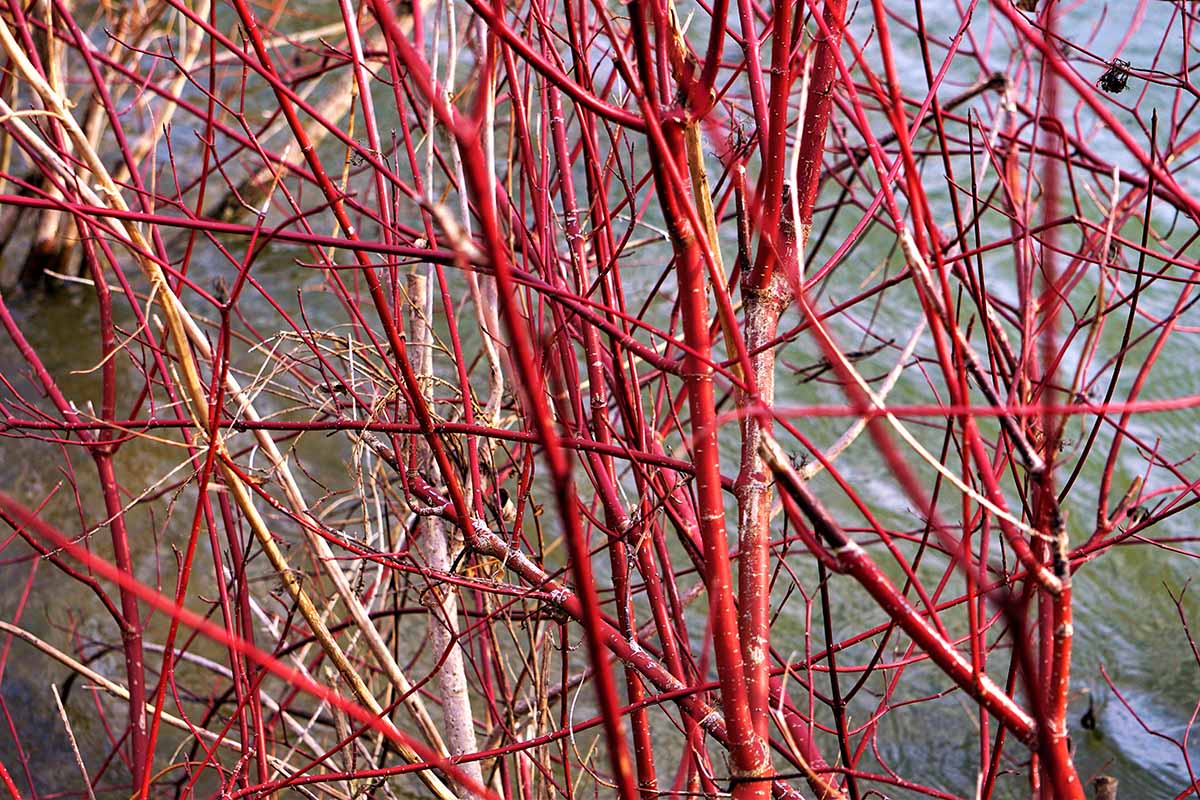
They are a source of food for pollinators, birds, and other small mammals which makes them an ideal choice for land restoration projects and ecological refuge sites.
These shrubs are also helpful in the application of erosion control due to their fast-growing and suckering habits. This also makes them a favorite for hedging and mass plantings.

My absolute favorite reason for growing these plants is for their winter interest. I adore how the red stems stand out against snow and the contrast they offer to greenery arrangements.
Quick Reference Growing Guide
| Plant Type: | Deciduous woody shrub | Flower/Foliage Color: | Yellow, white / green, variegated |
| Native to: | Asia, Europe, North America | Maintenance: | Moderate |
| Hardiness (USDA Zone): | 2-8 | Tolerance: | Deer, rabbits, wet soil |
| Bloom Time/Season: | Spring, winter interest | Soil Type: | Clay, loamy, sandy |
| Exposure: | Full sun to part shade | Soil pH: | 5.5-8.0 |
| Time to Maturity: | 5-10 years | Soil Drainage: | Well-draining |
| Spacing: | Width of mature spread | Attracts: | Bees, birds, butterflies |
| Planting Depth: | 1/2 inch (seed), depth of root system (transplants) | Uses: | Borders, focal points, hedging, mass plantings, naturalizing, ornamental accents, screening, seasonal interest, specimens, winter arrangements |
| Height: | 4-15 feet | Order: | Cornales |
| Spread: | 3-15 feet | Family: | Cornaceae |
| Water Needs: | Moderate | Genus: | Cornus |
| Common Pests and Diseases: | Bagworms, dogwood borer, dogwood club-gall midge, horse chestnut scale, leaf miners, scale; Cornus anthracnose/dogwood anthracnose, gray mold, honey fungus, leaf spot, leaf blight, powdery mildew, root rot, spot anthracnose, twig blight | Species: | Alba, sanguinea, sericea |
Set the Snow on Fire!
As winter’s chill takes hold, let the fiery stems of red twig dogwood warm you up as it sets the snowy landscape ablaze with color.
These vibrant sentinels stand guard over the slumbering earth, promising the return of spring’s sunshine and a new growing season.
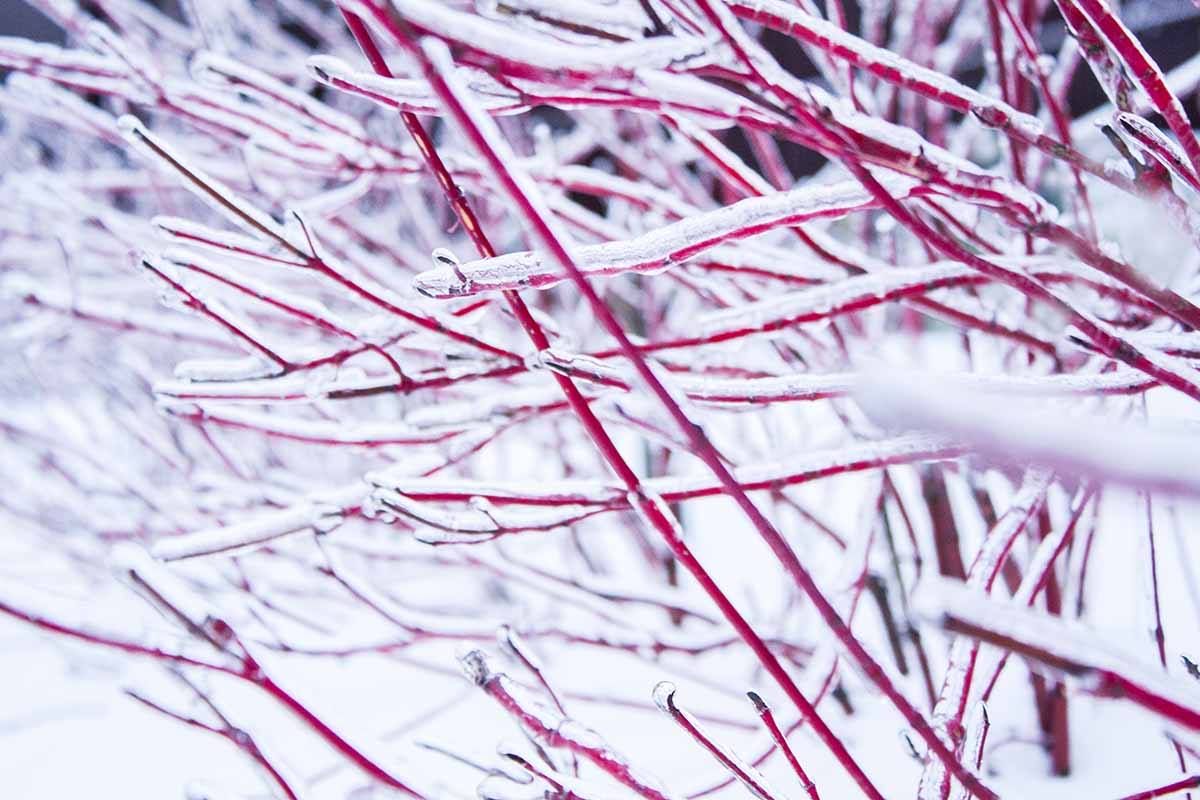
From the history of these stunning shrubs to their care and maintenance needs, we’ve covered everything you need to know about the red twig dogwood.
What do you have growing in your winter garden? Let us know in the comments section below.
And for more information about different types of dogwoods and how to grow them, check out these guides next:



